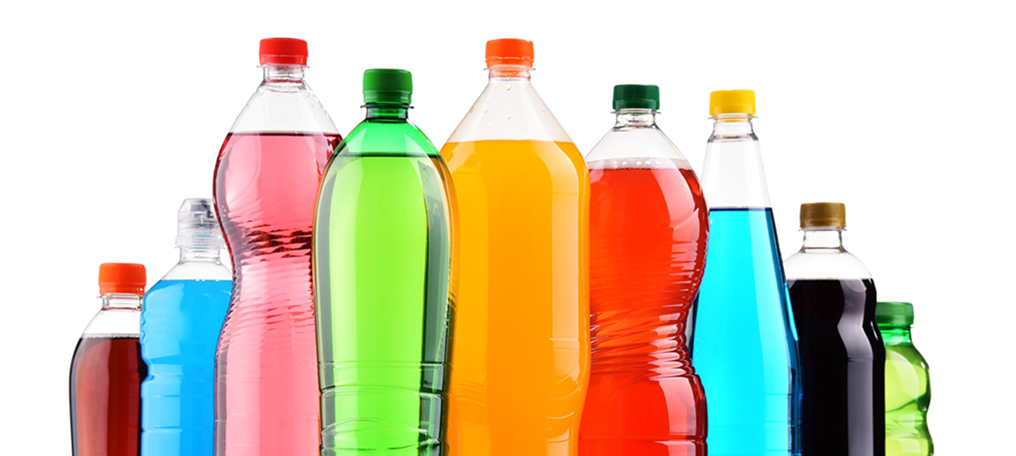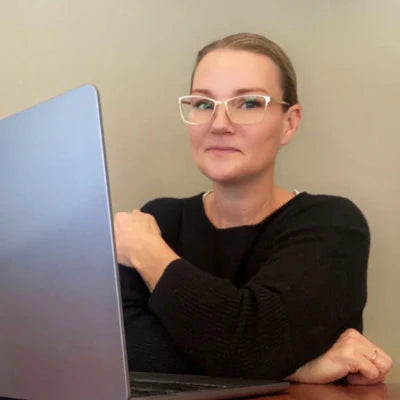
Recycling Symbols 1-7 in Australia – What do the codes actually mean?
Share
The number within the triangle on plastic items (commonly known as a ‘recycle symbol’) is a Plastics Identification Code (or Resin Identification Code). It’s important to note that this code only tells you what type of plastic an item is made from. On its own, you can’t tell if an item is okay to put into your homes recycling bin, but if combined with the new ARL Labels, you can get a better idea.
The 1-7 Plastics Identification Codes are a voluntary code that makes it easier for recycling facilities to identify and separate plastics for new purposes. It was launched in the USA in 1988 and introduced to Australia in 1990.
What Recycling Codes Can Actually Be Recycled?
While not everything with these 1-7 recycling codes can be put into your recycling bin it is generally safe to recycle anything with recycling codes 1, 2, and 5 as these items are accepted by most councils.
If unsure it’s best to check your local council’s website about what they will accept, but generally, these are the accepted items:
- Cleaning product bottles
- Detergent bottles
- Ice-cream containers/lids
- Juice bottles
- Milk bottles
- Shampoo, conditioner, shower gel bottles
- Soft drink bottles
- Butter and some yoghurt tubs
If you’re still unsure and can’t find the relevant information on your local council website, it’s best just to put it into the general waste bin.
What Do Recycling Symbols Mean?
The commonly referred to recycle symbols are actually the Plastics (or Resin) Identification Code. If a product has one of these, it doesn’t mean it can go into your recycling bin. (only codes 1,2 and 5 are generally okay for that)
This code, which includes a number inside a recycling symbol, and sometimes letters below it, was established back in 1988 by the Society of the Plastics Industry in the United States. It was then introduced in Australia in 1990.
This code is essentially a program created by the plastics industry to help manage their products. It's a way to identify the specific type of plastic used in an item through a numbering system based on the plastic's composition.
In Australia, these codes still play a significant role in categorising and identifying various plastic materials. It is still worthwhile understanding the 1-7 recycling codes so you can make informed choices, abolish ‘wish cycling’, and contribute to a greener future.
Regarding the world of recycling, it's essential to understand that not all plastics are created equally. In fact, many are a nightmare to recycle at all. Education and understanding are critical to ensure the plastics you buy can be easily recycled. Many of us see the recycling badge on our plastics and assume it's easy to remake into another plastic product. Sadly, this can't be further from the truth.
Seven recycling codes are typically found on recyclable products in Australia. These symbols have numbers that usually surround a triangle logo and are primarily meant to inform the recycling processors about the grade of plastic, and how and if it can be recycled.

Understanding the Recycling Codes 1-7 Chart
Recycle Symbol 1 – PET (or PETE) Polyethylene Terephthalate

The recycle 1 symbol is assigned to plastic containers commonly used for beverages, such as water bottles, soft drinks, and vegetable oil containers. PET is highly recyclable and can be transformed into various products. Recycling code 1 is the most common plastic and is super easy to recycle due to its lightweight and transparent properties.
#TopTip: before recycling symbol 1 plastics for kerbside collection, always ensure the products are clean and empty.
Recycle Symbol 2 - HDPE (High-Density Polyethylene)

Recycle 2 symbol is typically found on milk, detergent bottles like bleach, food containers, shampoo and conditioner bottles, butter and yoghurt containers and some reusable shopping bags. Recycling symbol 2 is typically easily recyclable and can be made into new containers or plastic lumber.
#TopTip: If the recycle 2 symbol is present on any soft plastics, these cannot go kerbside and must be recycled in soft plastics collections. Only rigid and hard recycle symbol 2 plastics can go kerbside.
Recycle 3 Symbol - PVC (V - Polyvinyl Chloride)

The recycle 3 symbol is used on typically for many toys, pipes, cable insulation, medical equipment, furniture, vinyl products, and even some food packaging. Recycling 3 symbol is less easily recycled than PET (recycle symbol 1) or HDPE (recycle symbol 2) and requires special processing.
#TopTip: The sustainability of PVC and recycling symbol 3 is under scrutiny, with many councils not offering to accept items that contain the recycling symbol 3 in their kerbside collections.
Recycle 4 Symbol - LDPE (Low-Density Polyethylene)

The recycling symbol 4 is used on LDPE, which is flexible and lightweight plastic commonly used in plastic bags, food packaging, and bubble wrap. While the recycling symbol 4 is less commonly recycled, some facilities can process LDPE into plastic road bases, furniture, and other products.
#TopTip: The recycle 4 symbol cannot be put into your kerbside collections. This type of plastic can cause headaches for recycling centres as lightweight plastic can become tangled in machinery. Correct disposal at collecting stations is paramount for the 4 recycling symbol.
Recycle 5 Symbol – PP (Polypropylene)

The recycle 5 symbol is often found on plastic takeaway and ice-cream containers. Some yogurt containers, bottle caps, medicine bottles, and food packaging may also contain the recycle 5 symbol.
#TopTip: the recycle 5 symbol can be popped into your kerbside collection, but like all council collections, they must be clean and empty before recycling.
Recycle 6 Symbol - PS (Polystyrene)

The recycling symbol 6 is for Polystyrene, or Styrofoam, commonly used in disposable coffee cups, packaging, plastic plates, and food containers like meat trays. Recycle 6 symbol is not widely accepted in many recycling programs.
#TopTip: Contact your local council on how to correctly recycle symbol 6 plastic products, as it is not suitable for kerbside collection.
Recycle 7 Symbol - Other Plastics

The recycling symbol 7 is a category that includes various plastics that don't fall into the previous six recycling codes. It contains materials like polycarbonate, BPA, acrylics, rope, sunglasses, and more. These plastics can be incredibly challenging to recycle and may involve a complex process to transform them into a new product.
#TopTip: Never put any recycled 7 symbol products into your kerbside collection. Contact your local council for advice on how to dispose of them correctly.
Why Understanding Recycling Codes 1-7 Matters
Eco-Conscious Choices - Knowing and understanding the recycling codes 1-7 can empower you to make eco-conscious choices when buying and disposing of products. Even though it has a recycling logo, it still takes a lot of work to recycle. Biotuff recommends to choosing items with higher recyclability to help support a circular economy.
Reducing Contamination - Understanding the recycling codes 1-7 can help prevent contamination in recycling kerbside collections, a costly adventure for recycling centres that can make some recycling products end up in landfills. Mixing incompatible plastics can hinder the recycling process and damage expensive equipment used in the recycling process.
Minimising Waste - Making informed decisions and understanding the seven recycling codes can reduce waste and save valuable resources. Reusing and recycling plastics correctly contributes to a cleaner environment.
Biodegradable & Compostable Plastics - As sustainability gains momentum, biodegradable and compostable plastics are becoming more popular. They break down naturally, reducing the burden on landfills. Biotuff believes that all plastics should be either easily recycled or 100% certified compostable.
What Recycling Codes Are Accepted for Kerbside Collections?
- Recycle Code 1
- Recycle Code 2
- Recycle Code 5
These recycling codes are typically accepted by most council Kerbside collections in Australia, but it's important always to check the logo and packaging of the product. Sadly, just because you see a recycle logo – it does not mean that it can be recycled through your council collection. If you are not sure, it is fundamental to contact your local council for advice on how to recycle your products correctly.
Fully Recyclable Plastics – Transforming Recycling Codes 1-7
The future lies in fully recyclable plastics designed for multiple lifecycles while making it easier for the consumer to understand what the recycling codes mean and how often certain plastics will be transformed into new products or end up in landfills. Researchers and innovators are striving to create plastics that are both functional and sustainable while being able to be fully recycled or composted.
Understanding recycling codes 1-7 is a vital step in embracing a greener and more sustainable world. It empowers communities, businesses, and individuals to make easy eco-conscious choices, reduce waste, and support sustainability trends. Biotuff firmly believes in ensuring that plastic products are biodegradable and compostable or completely recyclable.
By actively participating in recycling and adopting environmentally responsible practices, we can all contribute to a more sustainable future and protect our environment for future generations.
Sources: Chemistry Australia

We will only handle press inquiries. If you have questions regarding an order please contact our customer care. media@biotuff.com.au
In the spirit of reconciliation, Biotuff Australia acknowledges the Traditional Custodians of the country throughout Australia and their connections to land, sea and community.
We pay our respects to their elders past, present and emerging, and extend that respect to all Aboriginal and Torres Strait Islander peoples today and everyday.
